Bank of Ghana’s March 2022 Monetary Policy Committee briefing [Full text]
The Bank of Ghana (BoG) has increased the Monetary Policy Rate by 250 basis points to 17 percent. This is the first time the Central Bank has increased the key rate since November 2021.
In his address to the media on Monday, March 21, 2022, Governor of the Central Bank, Dr. Ernest Addison, noted that all is being done to check inflation.
Here is the full press release
The Monetary Policy Committee (MPC) held its 105th meeting, a week earlier than planned, to deliberate on recent macroeconomic developments and assess emerging risks to the inflation and growth outlook.
Among other things, the Committee deliberated on recent global and domestic developments and how these have impacted macroeconomic conditions since the last meeting.
A summary of assessment and key considerations that informed the Committee’s decision on the stance of monetary policy is provided below:
1. The global environment has changed dramatically since the January 2022 MPC meeting, reflecting new geopolitical events that have further heightened uncertainties. In particular, the Russia—Ukraine war has further challenged global growth recovery efforts. Global growth currently faces downside risks including the effect of the Russia-Ukraine war on commodity prices, the addition of more strain to supply chain bottlenecks on manufacturing output, withdrawal of monetary policy stimulus in some major advanced economies, and vulnerabilities associated with rising debt stocks, especially in emerging market and developing economies. The updated World Economic Outlook report by the IMF projects a decline in global growth from 5.9 percent in 2021 to 4.4 percent in 2022. This growth downgrade excludes recent developments of the Russia-Ukraine war hence, further moderation of projected global growth estimates is likely, under prolonged conditions of the war.
2. The elevated global price pressures have persisted driven by sharp increases in food and crude oil prices, and supply chain disruptions. The Russian-Ukraine war has exacerbated these price pressures and pushed energy and commodity prices to record high levels. As a result, headline inflation across several Advanced and Emerging Market economies has moved above targets, prompting monetary policy responses to help prevent inflation from becoming embedded. The U.S. Federal Reserve Bank, has, for the first time since 2018, raised its policy rate by 25 basis points to 0.50 percent, with further guidance that it would step up its incremental policy rate adjustment by 0.50 percent if inflation becomes endemic. The Bank of England has also raised its policy rate by another 25 basis points in the year to 0.75 percent. Similarly, policymakers in several emerging markets and developing economies have moved towards policy tightening in response to rising inflation and currency pressures. Bank of Ghana Monetary Policy Committee Press Release March 21, 2022.
3. The shift towards less accommodative policies by major central banks to contain inflationary pressures has resulted in tighter global financing conditions. The U.S. Dollar has strengthened, long-term bond yields have risen in response and sovereign bond spreads have widened especially for emerging market and frontier economies, leading to capital flow reversals and currency pressures. These global developments are likely to affect the domestic economy through trade and financing channels.
4. On the domestic front, the rebound in economic activity continued, as reflected in some improvements in the Bank’s updated Composite Index of Economic Activity (CIEA), although at a slower pace than in 2021. The index recorded an annual growth of 4.2 percent in January 2022 compared to 13.9 and 3.4 percent in the corresponding periods of 2021 and 2020. The key drivers of the index during the period were industrial production, exports, credit to the private sector, and air passenger arrivals. Consumption of goods and services, and construction activity, however, slowed down, acting as a drag on the index.
5. The Bank’s business and consumer confidence surveys, conducted in February 2022, revealed a softening of sentiments with business confidence declining by a greater extent. While consumer confidence dipped by 0.7 percentage points, business confidence declined by 9.6 percentage points. Consumers were mainly concerned about the persistent increases in fuel prices, increases in transportation fares, and rising inflation. Businesses, in addition to these factors, were also concerned about the impact of these on macroeconomic conditions and on their short-term targets and profitability for 2022. These survey findings were broadly in line with observed trends in the February 2022 Ghana Purchasing Managers Index (PMI). The Ghana PMI, which is a measure of the rate of inventory accumulation by managers of private sector companies, declined below the 50.0 benchmark on the back of weak output and purchasing activity amidst rising inflation.
6. Notwithstanding the sustained growth momentum, rising food prices, upward adjustments in petroleum prices and its effect on transport fares, and exchange rate depreciation pass-through have pushed up inflation to 15.7 percent at the end of February 2022, 5.7 percentage points outside the medium-term target band. Food inflation jumped sharply from 12.8 percent in December 2021 to 17.4 percent in February 2022, while non-food inflation jumped from 12.5 percent to 14.5 percent over the same period.
7. Also, underlying inflationary pressures have increased, signaling broad-based price pressures. The Bank’s core inflation measure (defined to exclude energy and utility prices), increased from 11.8 percent in December 2021 to 13.6 percent in January 2022 and further up to 15.4 percent in February 2022. Similarly, weighted inflation expectations comprising consumers, businesses, and the financial sector, also picked up significantly over the period.
8. Provisional data on budget execution for 2021 indicated an overall broad fiscal deficit (cash, excluding financial sector clean-up costs) of 9.7 percent of GDP, against the programmed target of 9.4 percent of GDP. The corresponding primary balance for the period was a deficit of GH¢8.9 billion (2.0 percent of GDP), against a deficit target of GH¢8.7 billion (2.0 percent of GDP). Over the year, total revenue 3 and grants amounted to GH¢67.9 billion (15.4 percent of GDP), below the projected GH¢72.5 billion (16.7 percent of GDP). Total expenditure amounted to GH¢110.4 billion (25.1 percent of GDP), below the programmed target of GH¢113.8 billion (25.9 percent of GDP).
9. These developments impacted the stock of public debt which increased to 80.1 percent of GDP (GH¢351.8 billion) at the end of December 2021, compared with 76.0 percent of GDP (GH¢291.6 billion) at the end of December 2020. Of the total debt stock, domestic debt was GH¢181.8 billion (41.4 percent of GDP), while the external debt was GH¢170.0 billion (38.7 percent of GDP).
10. Growth in total liquidity moderated significantly in February 2022, mainly driven by a contraction in the Net Foreign Assets of the banking sector, relative to an expansion in the Net Domestic Assets. Annual growth in broad money supply (M2+) moderated to 17.7 percent in February 2022 compared with 29.1 percent in the corresponding period of 2021. This was reflected in slower growth in currency outside banks and total deposits. Similarly, annual growth in reserve money declined considerably to 21.9 percent from a growth of 34.8 percent, over the same comparative period.
11. Credit to the private sector continued to recover, consistent with the rebound in economic activities. In nominal terms, annual growth in private sector credit increased significantly to 17.1 percent in February 2022 compared with 7.4 percent in the same period of 2021. In real terms, private sector credit grew by 1.2 percent relative to a contraction of 2.7 percent, over the same comparative period. The latest credit conditions survey revealed tightened credit stance on loans to enterprises. However, demand for credit by households and small and medium-sized enterprises is projected to increase in the near to medium term.
12. Developments on the money market broadly showed rising interest rates across the entirety of the yield curve. Over the period December 2021 to February 2022,
- The 91-day and 182-day Treasury bill rates have inched up to 12.8 percent and 13.3 percent respectively, in February 2022. The respective rates in December 2021 were 12.5 percent and 13.2 percent.
- The rate on the 364-day instrument also went up from 16.5 percent to 16.97 percent.
- The rate on the 3-year bond increased from 19 percent to 20.5 percent while that for the 2-year and 5-year bond remained unchanged at 19.75 and 21 percent respectively.
- The weighted average interbank rate inched up from 12.68 percent in December 2021 to 12.96 percent in February 2022. The increase in rates at the interbank market level was transmitted to the retail-end of the market, resulting in average lending rates of banks inching up marginally to 20.52 percent in February 2022 from 20 percent recorded in December 2021.
13. On the capital market, the Ghana Stock Exchange Composite Index (GSE-CI) recorded a gain of 43.7 percent in 2021, relative to a loss of 14.0 percent in 2020. For the first two months of the year, the index has recorded a loss of 3.33 percent. The year-to-date loss has been driven by a variety of factors including the reimposition of capital gains tax on securities listed on the GSE which is inducing some investors to switch to Government securities. Other factors include selling 4 pressures, poor performance of some companies, relatively higher yields on fixed income securities, uncertainty induced by inflation and exchange rate pressures, as well as portfolio reversals.
14. Developments in the banking sector over the first two months of 2022 show continued strong asset growth. Total assets stood at GH¢187.8 billion in February 2022, representing 23.5 percent annual growth, compared with 18.5 percent growth in the previous year. The growth in assets was on the back of increased deposits and borrowing. Total deposits recorded a year-on-year growth of 18.2 percent to GH¢123.0 billion. Borrowing increased significantly by 78.8 percent to GH¢25.5 billion, relative to the contraction of 23.4 percent in the previous year. The rebound in credit growth continued in the first two months of 2022, with a 70.7 percent increase in New Advances to GH¢8.0 billion, compared with 24.6 percent growth in the same period last year.
15. Trends in the financial soundness indicators remained positive, underpinned by strong solvency, liquidity, and profitability. The Capital Adequacy Ratio of the Industry was 19.6 percent at the end-February 2022, well above the current 11.5 percent regulatory minimum threshold. Core liquid assets to short-term liabilities were 24.2 percent in February 2022, compared with 26.5 percent in the previous year. Improvements in asset quality continued into 2022, with the Non-Performing Loans (NPL) ratio declining to 14.4 percent on average, at the end-February 2022, compared with the NPL ratio of 15.3 percent in February 2021.
16. Banks’ profitability improved over the first two months of 2022, with profit before tax at GH¢1.3 billion, compared to GH¢1.1 billion in the same period last year. Net interest income grew by 10.3 percent to GH¢2.2 billion, compared to 10.9 percent a year ago. Net fees and commissions grew by 11.8 percent to GH¢486.8 million, lower than the growth of 13.7 percent registered during the same period last year. Other income of the banks stood at GH¢383.2 million, representing 95.5 percent growth, compared with a contraction of 16.5 percent in the same period last year. These developments resulted in a 16.9 percent growth in operating income to GH¢3.1 billion, compared with a growth of 8.7 percent in the corresponding year. However, operating expenses went up by 21.3 percent on account of higher administrative costs and emoluments, relative to a contraction of 0.3 percent in the same period last year.
17. On the external front, commodity prices have increased sharply, driven in large parts by ongoing geopolitical tensions and increased demand pressures. Average crude oil prices increased by 25.0 percent on a year-to-date basis to US$93.5 per barrel in February 2022. The sharp rise in prices was supported by supply restraint and political tensions between Russia and Ukraine, which added to concerns about further disruption in an already-tight market. Gold also gained from the escalating geopolitical tensions as demand for the safe-haven metal increased. Gold prices rose by 3.3 percent in the year to US$1,849.5 per ounce in February 2022. Cocoa prices rose to US$2,659.5 per tonne in February 2022 compared to US$2,545.9 per tonne a month earlier, as concerns about dry weather conditions boosted prices.
18. While commodity prices have impacted exports positively in the first two months of the year, their impact on imports has far outweighed the gains made in exports and has led to a narrowing of the trade surplus. Total exports amounted to US$2.7 billion, a growth of 5.5 percent year-on-year, compared with US$2.6 billion as of February 2021. The jump in export receipts was driven mainly by a 35 percent increase in crude oil exports, benefitting from price effects as volumes declined. Other exports, mainly non-traditional exports, also registered an increase of 27.2 percent.
19. Consistent with a pick-up in economic activities, imports grew by 7.9 percent to US$2.3 billion compared with US$2.2 billion same period last year. The growth was reflected mainly in oil and gas imports (primarily refined petroleum products), which went up by 80.1 percent year on year. The developments in exports and imports translated to a lower trade surplus of US$404.9 million in the first two months of 2022, compared with US$432.7 million in the first two months of 2021. Looking ahead, these trends together with developments in the services and income account will likely result in a widening of the current account deficit by the end of the first quarter.
20. The Russia Ukraine war is likely to impact negatively on Ghana’s external sector, particularly in the area of some key construction and agricultural commodities. In the recent past, an average of about 2.5 percent of Ghana’s total non-oil imports have originated from Russia and Ukraine and around 0.4 percent of Ghana’s total exports are destined to Russia and Ukraine. The main import items from Russia are grains, wheat flour, and fertilizers. In 2021, around 28.7 percent of Ghana’s grains imports came from Russia and for the first two months of 2022, grains imports from Russian accounted for 31.2 percent of the total grain imports. And about 50.0 percent and 39.2 percent of flour and fertilizer imports respectively, were sourced from Russia in the first two months of this year. Ghana’s main exports to Russia are cocoa beans and products and it accounted for 0.2 percent of total cocoa exports. These have important implications for the supply and prices of these major items imported from Russia.
21. Ghana’s major imports from Ukraine are iron ore and steel accounting for over 60 percent of the total iron ore and steel imports. As a result of this fact, the construction industry will likely face some challenges in terms of supply disruptions and prices of steel and iron ore imports. With regards to exports, manganese is the major item exported to Ukraine and for the first two months of this year manganese shipment to Ukraine accounted for around 12 percent of the total manganese exports. Over the past few years, manganese exports to Ukraine have accounted for over 20 percent of the total manganese exports.
22. Gross International Reserves at the end of February 2022 stood at US$9,547.96 million, providing cover for 4.3 months of imports of goods and services. This compares with US$9,695.22 million, equivalent to 4.4 months of import cover at the end of December 2021. There was increased volatility in the foreign exchange market during the first few months of the year, driven by demand pressures from offshore secondary market activities, corporate sectors, oil importers, and weakened sentiments due to the downgrade by the rating agencies. These factors tightened forex liquidity which was partly eased by the regular foreign exchange auctions and inflows from mining and remittances. Cumulatively, the Ghana Cedi 6 depreciated by 14.6 percent against the US dollar, and 11.6 percent each against the Pound Sterling and Euro, in the year to 15th March 2022. Comparatively, the Ghana cedi appreciated by 0.6 percent and 3.4 percent against the US Dollar and the Euro, and depreciated by 1.0 percent against the Pound Sterling in the same period of 2021.
Summary and Outlook
23. In summary, the Committee noted that the global economy has entered a period of profound uncertainty and fragility. The Russia-Ukraine war has introduced new uncertainties which have complicated the outlook and aggravated the Covid related supply bottlenecks, elevated inflation expectations, and triggered higher crude oil prices, compounding the already high global inflationary pressures. Global financing conditions have tightened as key central banks raised policy rates to counter rising inflation. The combined effect of these developments could lead to further downgrades in global growth projections, increase investor uncertainty, and lead to capital outflows from emerging and frontier economies with weak fundamentals and could have severe exchange rate implications.
24. Domestic growth conditions are fairly strong despite signs of weakening consumer and business sentiments. The steady increase in private sector credit growth has continued with positive growth implications. The banking sector’s performance remains strong, with sustained growth in total assets, investments, and deposits. Key financial soundness indicators such as profitability, liquidity, and solvency remain healthy. Asset quality improved slightly, although there are upside risks to the outlook, requiring continued monitoring to address early signs of stress within the sector.

25. The Sovereign credit rating downgrades of Ghana by Fitch and Moody’s led to widened yield spreads on both cedi-denominated Government of Ghana bonds and the country’s Eurobonds. These downgrades reflect market and investor concerns about fiscal and debt sustainability. Consequently, the Ghana Cedi has come under severe pressure as offshore investors exited positions in domestic securities at a time when domestic demand for forex has increased, reflecting both real and speculative demand. This has caused the exchange rate to overshoot its long-term trend. The strengthening of the US dollar, liquidity pressures, uncertainties regarding budget implementation, portfolio reversals by nonresidents, and some speculative pressures are key contributory factors.
26. At this MPC meeting, the combination of tighter global financing conditions, sharp pressures on the exchange rate, and elevated inflation pose some policy challenges. Headline inflation has risen sharply to 15.7 percent in February 2022, and both headline and core inflation are significantly above the upper limit of the medium-term target band. The uncertainty surrounding price developments and their impact on economic activity is weighing down business and consumer confidence. The risks in the outlook for inflation are on the upside and include petroleum price adjustments and transportation costs, and exchange rate depreciation. The Bank’s latest forecast still depicts an elevated inflation profile in the near term, with inflation falling within the medium-term target band within a year.
27. Fiscal policy implementation has come under strain, reflecting embedded rigidities in the fiscal framework which will require extensive structural reforms to free fiscal 7 space to restore both fiscal and debt sustainability. Revenue performance has been slow to align with projections, while expenditure remains rigid downwards despite the strong efforts to cut expenditure by 20 percent as announced by the Government. The above has resulted in financing constraints that would have to be resolved very swiftly to ensure the announced fiscal consolidation path is achieved.
28. The MPC is however confident that ongoing discussions will lead to very decisive policy reforms that will address underlying fiscal mismatches and restore some calm in the markets. This, together with the monetary policy decision and additional measures, should help re-anchor inflation expectations. 29. Under these circumstances, the Committee has decided to increase the policy rate by 250 basis points to 17 percent.
30. In addition to the upward policy rate adjustment, the Bank of Ghana will, effective April 1, 2022, enforce the following measures in relation to universal banks:
- The Cash Reserve Ratio is increased to 12 percent;
- The Capital Conservation Buffer is reset to the pre-pandemic level of 3 percent, making the Capital Adequacy Ratio a total of 13 percent; and
- The provisioning rate for loans in the Other Loans Exceptionally Mentioned (OLEM) category is reset to the pre-pandemic level of 10 percent.
Informational Note
The next Monetary Policy Committee (MPC) meeting is scheduled for May 18 – 20, 2022. The meeting will conclude on Monday, May 23, 2022, with the announcement of the policy decision.
Source: Citibusiness



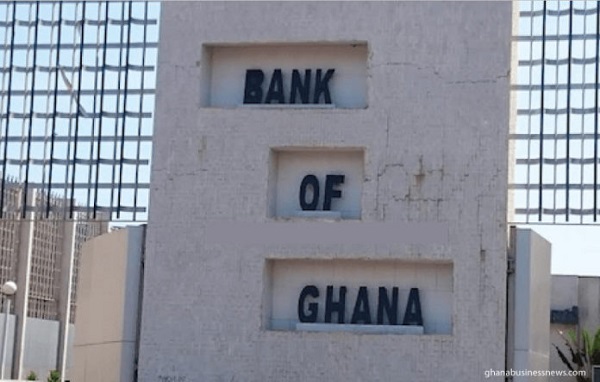
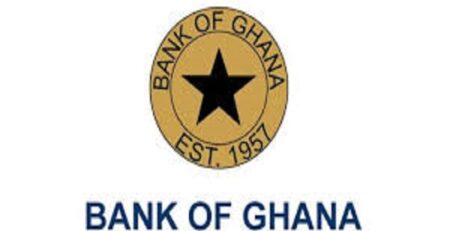

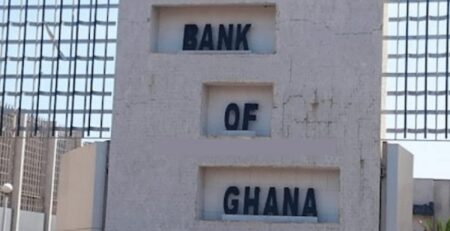

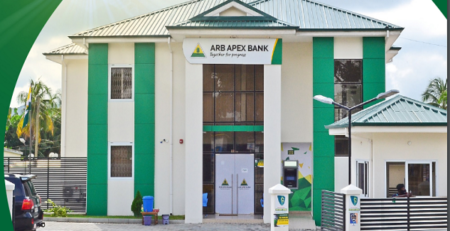



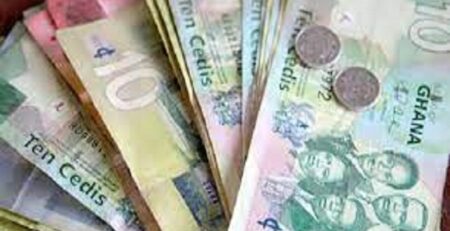

Leave a Reply